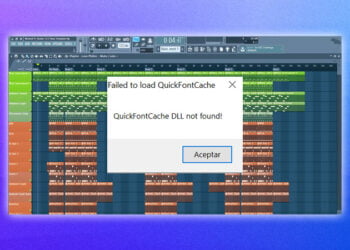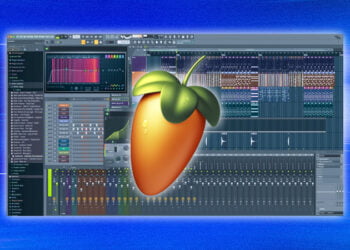When it comes to producing great tracks, the use of equalization (EQ) is essential.
EQ helps to shape the sound of your track by letting you adjust the frequency and gain of individual elements in your mix.
In this blog post, we will take a look at how to use equalization in FL Studio, a popular digital audio workstation (DAW).
We will go over some of the basics of EQ, as well as some of the more advanced techniques used by professional producers to achieve a great mix.
By learning how to EQ in FL Studio, you will be able to take full control of the sound of your track, allowing you to craft an amazing mix.
So let’s dive in and take a look at some of the ways you can use EQ to make your track sound amazing!
Select which track you would like to EQ
The first step in the process of EQing in FL Studio is to select which track you would like to EQ.
To do this, all you need to do is click on the track in the channel rack on the left side of the screen.
Once the track is selected, you’ll be able to adjust the EQ settings.
You can choose between a low-pass, high-pass, band-pass, or notch filter.
The type of filter you choose will depend on the type of sound you’re trying to achieve.
Select the EQ Plugin and apply it to the track.
Now that you have the EQ plugin loaded, it’s time to apply it to the track.
To do this, simply drag the EQ plugin onto the track you’re editing.
You can also right-click on the track and select “Add FX”, then select “EQ” from the drop-down list.
Once the plugin is applied to the track, you can begin adjusting the EQ levels to shape your sound.
You can adjust the frequency, gain and Q settings to achieve the desired results.
Experiment with different settings and variations to find the sound you’re looking for.
Identify the frequency range of the track.
Before you can begin to EQ, you must first identify the frequency range of the track you are working on.
To do this, you can use either a Spectrum analyzer or a Frequency analyzer.
The spectrum analyzer will show you the full frequency range of the track, while the frequency analyzer will break down the frequency range into bands, allowing you to more easily identify which areas you want to reduce or boost.
Additionally, you can use the Frequency Knob in the EQ window to help you further refine the frequency range.
Once you have identified the frequency range, you can begin to adjust the EQ settings to achieve the sound you are looking for.
Utilize the low, mid and high frequency bands to adjust the EQ.
Once you have set up your tracks, it’s time to start using the equalizer to optimize your sound.
Start by utilizing the low, mid, and high frequency bands to adjust the EQ.
By doing this, you will be able to increase or decrease certain frequencies in order to make the track sound more balanced or to emphasize certain elements.
For example, if you want a bass line to stand out more, you can boost the low frequency band.
Similarly, if you want to reduce the amount of sibilance in a vocal, you can reduce the high frequency band.
Experiment with different combinations of EQ settings until you achieve the desired result.
Set the frequency ranges of the bands manually.
After setting the frequencies of the bands, you can manually adjust the EQ in FL Studio to further refine the sound.
This is especially helpful when you need to make precise adjustments to a specific frequency range.
To adjust the frequency ranges of the bands, click the arrow to the right of the band.
A window will appear with a graph of the frequency spectrum, and a slider at the bottom of the graph.
Use the slider to set the frequency range of the band, or manually enter the frequency in the box beside the slider.
Once you’ve set the frequency range, you can make manual adjustments to the EQ by dragging the dots on the graph up or down.
Adjust the gain of the bands and monitor the sound.
Once you have selected the track and applied the EQ, you can then adjust the gain of the bands to create the desired sound.
To adjust the gain, simply click and drag the knobs located at the top of each EQ band.
When adjusting the gain, it is important to make sure that you do not push the gain too far as this can cause distortion in the audio.
Also, be sure to monitor the sound while adjusting the gain, so that you can make sure that you are creating the desired effect.
Apply different EQ curves to enhance the sound.
One of the most effective ways to fine-tune your sound in FL Studio is to apply different EQ curves.
EQ curves allow you to boost or cut certain frequencies to improve the overall sound.
To apply an EQ curve, open up the Mixer window and select an insert slot.
From there, choose an EQ from the drop-down menu and click on the curve grid.
Here, you can adjust the frequency, gain, and Q values to achieve the desired effect.
You can also save your custom EQ curves for future use.
Experiment with different curves to find the EQ settings that best suit your needs.
Adjust the Q value of the EQ curve to adjust the resonance of the track.
The Q value of the EQ curve is one of the most important parameters to adjust when EQing in FL Studio.
The Q value determines the resonance of the track, allowing you to selectively boost or cut certain frequencies.
To adjust the Q value, simply drag the mouse cursor over the EQ curve.
The higher the Q value, the more resonance the track will have.
Experiment with different Q values to find the perfect resonance for your track.
Conclusion
To sum up, EQing in FL Studio is a great way to shape and refine your sound.
You can use the basic equalizer to make subtle adjustments or the more advanced equalizers to really sculpt your sound.
With the various options available, you can find the perfect EQ settings for your music and make sure it sounds the way you want it to.
Ultimately, EQing in FL Studio can help you achieve a professional, polished sound for your tracks.
























